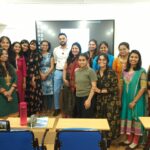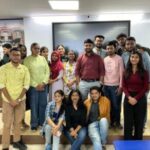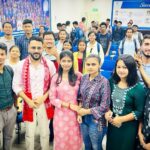On 26th June 2025, Shubhanshu Shukla became the second Indian to travel to space, after Rakesh Sharma. He was part of the US-sponsored Axiom-4 private space mission, which included astronauts from the USA, India, Poland, and Hungary. The crew traveled aboard Dragon 213, a space vehicle that docked with the International Space Station (ISS). This 14-day mission involved conducting 60 scientific experiments, with Shubhanshu Shukla directly leading 7 key experiments.
The experiments undertaken by him focus primarily on space biotechnology, microgravity effects, and life support systems. These include studies on edible microalgae (ISRO-ICGEB collaboration) to explore how cosmic radiation and low gravity affect growth and metabolism, critical for future deep-space agriculture. The Myogenesis experiment (InStem) investigates muscle tissue regeneration in microgravity—vital for understanding muscle loss in astronauts and devising countermeasures for long-duration missions.
Another notable experiment is the Sprout Growth Study (UAS Dharwad), which examines the germination and growth of seeds like moong and fenugreek in space, aiming to create self-sustaining food systems for space habitats. The Tardigrade Gene Study (IISc) monitors gene expression in these resilient “water bears,” offering insights into survival in extreme space conditions. In the Voyager Displays project (IISc), Shukla explores how humans interact with screens under microgravity, analyzing cognitive stress and response, essential for astronaut well-being.
A major highlight is the Cyanobacteria experiment (ICGEB). This compares the growth and protein response of cyanobacteria on urea vs nitrate media to understand their efficiency in oxygen production. Cyanobacteria are also known as blue-green algae and perform oxygenic photosynthesis by converting CO₂ + H₂O into O₂ + glucose, similar to plants.

Their resilience in extreme conditions, low input requirements (light, CO₂, H₂O), and ability to survive radiation make them ideal for life support systems on the ISS or even Mars.
These experiments are not just symbolic; they hold immense relevance for India’s own human spaceflight ambitions, such as Gaganyaan, and long-duration planetary missions like Chandrayaan and Mangalyaan.
UPSC Style Questions:
🔹 Prelims MCQs
1. Which of the following statements about cyanobacteria in space is/are correct?
1. They require nitrogen-rich soil to perform photosynthesis.
2. They can produce oxygen in microgravity using light, CO₂, and water.
3. They are suitable for life support in long-duration space missions.
Options:
A. 1 and 2 only
B. 2 and 3 only ✅
C. 1 and 3 only
D. All of the above
2. The Axiom-4 Mission, in which an Indian astronaut participated in 2025, aimed primarily at:
A. Military reconnaissance in space
B. Satellite deployment
C. Private research & microgravity experiments ✅
D. Mars landing mission
🔹 Mains GS Questions
1. GS-3 (Science & Tech):
“Microgravity research aboard the International Space Station can transform biotechnology and health outcomes for future space missions.”
Discuss with reference to India’s recent participation in the Axiom Mission.
2. GS-2 (Health):
Examine the importance of biomedical studies in space missions with reference to astronaut muscle loss and nutrition.
3. GS-1 / Essay:
“Life beyond Earth: Exploring sustainability through biotechnology in space.” Discuss in the Indian context.











